Review: Samsung Sunburst
Jun 9, 2010, 11:09 PM by Philip Berne
The Samsung Sunburst is a happy little tablet phone on AT&T. It's features Samsung's TouchWIZ interface and loads of home screen widgets. Can it get by on a wink and a smile?
Form
Is It Your Type?
Is It Your Type?
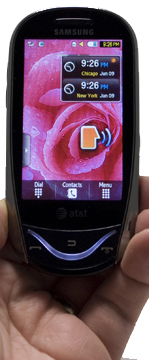
The Samsung Sunburst is a cute little tablet phone with a wide grin on its face. While it doesn't stand out in terms of features, AT&T and Samsung are relying on its style and small size to win fans. The Sunburst gets the full TouchWIZ treatment, using Samsung's touch-friendly interface, but lacks some of the skills of its big brother, the Samsung Solstice. Do you need faster networking to enjoy the touchscreen experience?
Body
Samsung has flooded the market with phones like the Samsung Sunburst: simple tablet phones with a resistive touchscreen dominating a small and light shell. While the rest of the pack, including the Samsung Solstice and Samsung Mythic on AT&T, or the Samsung Highlight on T-Mobile, sticks to a more square, stately look, the Samsung Sunburst tries a friendlier approach. The phone seems more curvy, with chrome accents sweeping in from the sides in an effect that gives the phone a hippy, hourglass appearance. The most striking feature, though, is the shiny chrome smile that weaves between the three buttons on the face. When you wake the Sunburst from sleeping, the smile actually lights up, adding to the effect.
The phone is small, thin and light in the hand or pocket. Though the light weight gives it a somewhat less expensive feel, the metal accents and soft touch paint on the back cover make it pleasant to hold and use, so it doesn't feel too cheap.
There are few buttons around the device. On the face you'll find a Send and End key and a Back button. The End key pulls double duty as a power button. These are real buttons, not touch sensitive keys, and they have a nice, sharp click. On the left side there's a nicely raised volume rocker with some tiny metal accents to help it stand out. There's also an external microSD port, always a better choice than a slot hidden under the battery.
On the right side of the phone there's a large camera button, though it's only a single stage shutter release since the Sunburst doesn't use auto focus. There's also a screen lock key. Near the top of the right side you'll find Samsung's proprietary port for charging, USB and headphones. I hate that Samsung still sticks with a proprietary port, especially on these less expensive phones. This means you won't be able to use your own earbuds, you won't be able to use a standard USB cable and you won't be able to share microUSB chargers with other devices.
The Three S's
Screen
The three inch touchscreen on the Samsung Sunburst looks pretty good, even though resolution could be higher. The screen shows 400 by 240 pixels, which is respectable for its class and on par with the slightly pricier Solstice. Thin text looks jagged, but pictures look sharp and colorful. The TouchWIZ interface looks great on this display, with large icons and finger-sized buttons. It was easy to read the screen indoors and out. The display lost some visibility under bright sunlight, but only a little.
Sound
Sound quality through the earpiece on the Samsung Sunburst was a bit muddy. Callers sounded bass heavy, without enough bright treble in their voices. There was also a slight hiss in the background. This didn't cause trouble during calls, it just gave callers a slightly slurred sound. The speakerphone actually sounded better than the earpiece. It was crisp, except when I cranked up the volume, at which point my callers would distort when they spoke loudly. On their end, callers said I sounded good, with no hiss or audio trouble.
Ringtones were loud enough, but not abusively loud like I prefer. The phone also has a strong vibrate, so between the two, I was easily able to hear and feel the ringing from my pocket.
Signal
The Sunburst received a strong signal riding AT&T's EDGE network. The phone usually reported four to five bars of service. Calls always went through and data, though slow because of the lack of 3G support, never stalled or failed to connect. The lack of 3G is the main thing separating this phone from the Samsung Solstice, but honestly, you'll hardly notice the slower networking unless you decide to tackle the sub-par Web browser. For messaging and simple status updates, EDGE networking is good enough.
Battery
Battery life was pretty good. I got nearly six hours of talking time out of the Sunburst. I was expecting a bit more, though. The Samsung Solstice managed only a half hour less using AT&T's 3G network, so I thought the lack of 3G support on the Sunburst would translate into more minutes, but that wasn't the case. The Sunburst was able to hold a charge through a couple day's use. The phone also alerts you when the battery is full so you can unplug the charger to conserve electricity.
Touch
When it comes to touch response, the Samsung Sunburst has two big strikes against it. First, the touchscreen was not very responsive. The resistive technology required a firm push to register taps, and it often missed my input. This made everything more difficult. Dialing was harder than it should have been, as was typing on the keyboard. The phone also frequently registered a tap when I was actually starting a swiping motion. For an inexpensive phone, this isn't such a surprise, but it's still disappointing. I've seen better touchscreens, especilly the screen on the Pantech Pursuit that I just reviewed, also on AT&T. For cheap tablet phones, though, this is par for the course.
The second strike against the Sunburst is Samsung's TouchWIZ interface. TouchWIZ requires more screen real estate than the phone offers. Swiping between the three paneled home screen worked well, some of the best response I got on this phone. But there's plenty of tapping and dragging that didn't work as well. The tiny widget drawer was difficult to tap accurately on this screen. When widgets overlapped, it was tough to home in on the one I wanted to press.
Basics
Menus
As I mentioned, the Samsung Sunburst uses Samsung's TouchWIZ interface design for the home screens. I am not a fan of TouchWIZ; it seems poorly designed for small screens like the three inch display on the Sunburst. TouchWIZ's main component is a drawer that pops out from the left side of the screen. The drawer contains small icons that represent widgets. You drag an icon out of the drawer, and it expands to offer some widget function. There's a music player widget, a Yahoo search widget, a shortcut to open the Facebook mobile Web site, and plenty more. The Sunburst offers 27 different widgets in all. Some of these are mostly useless, like the birthday widget, which it seems would only be useful a few times a year. Widgets don't take any action while they are stuck in the drawer, you have to drag them out to the home screen area to use their functions. This seems like a bad imitation of Android, where apps can be dragged in and out of the app drawer, but in Android you can also launch an app just by tapping it, no dragging required.
My problem with TouchWIZ isn't with its style. The interface never seems to function properly. Because of problems with the touchscreen, it's easy to scroll up and down the selection of widgets and accidentally drop one onto the home screen. Then, it's tough to put them away. You can't just drag them to a trash can, you have to open the drawer and put the widget back, like a child cleaning up his toys. For some reason, Samsung allows widgets to overlap and completely cover each other, so it's easy to make a mess on your screens and obscure the features you want. The Sunburst has a three paneled homescreen, but you can't drag widgets from one panel to another, you have to put them away, move to the next panel, then drag them out again. This is all very poor design. I like the idea of widgets on the homescreen. I think it adds a layer of utility and customization that most feature phones lack. But TouchWIZ executes this concept poorly.
At the bottom of the home screen is a row of buttons to activate the dialpad, open the address book or view the phone's main menu. The menu, separate from TouchWIZ, is a basic icon grid. Most of the best features get their own top level icon, so its easy to jump into the messaging functions, the music player or the GPS navigation. I would replace IM on the main menu with AT&T's Social Net app. Otherwise, Social Net is hard to find, buried two levels deep under the "My Stuff" menu item. Come to think of it, I'd like to be able to completely customize this menu, but there are no options to change the design or specific offering.
Samsung does a nice job with alerts on the lock screen. There's an alert bar, and it shows new calls, voice mail, text messages, IM chats and email. It even has a spot to show you if your designated Favorite people have tried to get in touch.
Calls / Contacts
Making calls was easy enough, but many calling functions were held back by the unresponsive touchscreen. To start a call, you have to hit the dialer button on the homescreen. Pressing the Send key opens the call log, but there's no way to access the dialer from the log. You can tap on a recent call entry and start dialing or send a text message, though. The call log offers a detailed history for each caller, including dates and call duration.
When you're in a call, the Samsung Sunburst offers a nice selection of features, though pecking at the small icons on screen can be a hassle. When a call comes in, you answer it by swiping one of two thin buttons on screen. These were too close together, and I accidentally rejected a couple calls. Once you're in a call, you get onscreen buttons for the speakerphone, Bluetooth settings and a button to mute the mic. If you want to place another call for a conference, you press the dial key and simply dial the third party.
The Sunburst gets speaker-independent voice dialing from Nuance. You can say a contact's name or the digits in a phone number, and the app will start dialing. It worked well in my tests, only failing on less common names in my list.
The contact list has just enough fields, but it isn't as extensive as a smartphone. You can add up to five phone numbers and three email addresses for each contact. From the contact listing, you can make a call or send a text message. You can also send an email or open up a Web page, if you include a URL with the contact. You cannot start a navigation session, even if you include a postal address.
There's no way to synchronize the phonebook on the Samsung Suburst, which is a real disappointment. Besides synchronizing with Google, Yahoo or some other popular service, the Sunburst doesn't even let you sync with AT&T's own online Address Book. This will make entering your contacts a real chore.
Messaging
The Samsung Sunburst covers the most basic messaging features with almost no frills. There is a simple SMS app, but it can't display messages in a threaded, conversational style. You can swipe from one message to the next, but you can't see them all in a single column. MMS messaging gave me trouble. My photos would often fail to appear on the Sunburst. Sometimes the message would indicate I had a video attachment, when it was really a picture, and the message would be blank. Sometimes nothing came through at all.
The Sunburst gets a simple IM app for instant messaging fans using AIM, Yahoo or MSN Messenger. It was very basic, but it got the job done and my chats went through without a hitch. AT&T's Mobile Email app is available, but email is a $5 per month subscription service, and that doesn't include data charges if you don't have a data plan. This is a rip-off, especially for the pared down email app that AT&T provides.
For social networking, the Sunburst includes a few widgets in the TouchWIZ drawer, but these are all just shortcuts to mobile Web sites. The only app onboard for messaging is the Social Net app. Social Net is fine if you want to read status updates and post your own messages to Facebook, MySpace and Twitter, but it can't handle any functions more advanced than that. No uploading photos or commenting on posts from Social Net, for instance.
Extras
Music
There's a nice looking music player on the Samsung Sunburst, but the hardware holds back the music experience. The player software features large buttons that are easy to tap with a fingertip, though you'll still have to press firmly. There are even controls for shuffle and repeat options, as well as a few preset equalizer settings. With the right EQ, music did sound better. There's a TouchWIZ music widget for the home screen that offers some basic playback control, but if you want to shuttle through a song you can also swipe the progress bar with your finger. When the screen is locked, the Sunburst does not offer music controls on the lock screen.
The Sunburst needs a 3.5mm headphone jack; unfortunately, it doesn't have one. The phone doesn't come with headphones or even an adapter, so you'll either have to hunt down a proprietary part or stick with stereo Bluetooth headphones. Music sounds pretty good coming through the speaker. Unfortunately, the speaker is on the bottom of the phone, and though a small lip keeps it from being covered completely, when the phone is screen up the speaker is still face down, so the sound is a bit muffled.
There's no USB cable included with the Samsung Sunburst, nor a microSD card, but this wasn't too much trouble. Once I loaded my music files onto my own card, the Sunburst found them easily. Album artwork did not come through on most tracks, however.
Camera
Camera
The Samsung Sunburst gets a nice camera interface that was very easy to manage. Too bad it's stuck with a low resolution, 2 megapixel camera. Still, the camera app uses onscreen buttons, and these overlay the live image in the viewfinder so you never lose sight of the action. The camera itself was slow, sometimes taking up to three seconds to start up and another couple seconds between shots. But there is little delay after you press the shutter button, so you won't miss opportunities if the camera is active.
The camera offers a few shooting options. You can take single shots or a slow, continuous burst. You can shoot multiple shots and stitch them for a panorama. There's a Smile Shot mode, but it never worked properly for me and wouldn't fire when I flashed a smile. You can also adjust white balance or geo-tag photos, among a variety of other minor features.
Image Gallery
The image gallery was the most responsive app on the Samsung Sunburst, and I had few problems with the touchscreen while viewing pics. You can swipe from image to image, and the Sunburst let me swipe through pics quickly. There's no way to view a group of pictures at once; no grid view or list view for the gallery, only single images on screen, which is very odd. There is a cool zoom feature in the image view. You double tap on a photo, then hold your finger and swipe up to zoom in, down to zoom out. It's an elegant way to get a closer look at pics.
There are a surprising number of filters and effects that you can apply to pics. Maybe too many. You can simply adjust tone, white balance or brightness, or you can apply some special effects. But Samsung doesn't label these effects, it just gives you an example photo of a kiwi fruit with the effect applied. It's impossible to tell what's going on in many examples, and when you tap to get the name of the effect, you also apply that effect to your own picture. There are literally dozens of filters, warps and style adjustments you can make, and none of them are properly labeled.
From the image gallery, you can send pictures via MMS message or upload them to HP's Snapfish site. You can also transfer images to a desktop using Bluetooth.
Image Quality
Photos
Image quality was pretty bad, but I didn't expect much from a 2 megapixel camera. Pictures were blurry and washed out looking. Indoors, there was plenty of noise. Bright backlight completely dominated scenes with mixed lighting. These pictures are fine for simple MMS messaging, but I wouldn't upload them to Facebook, even if I could. With all the photo effects you can apply, these pics are more for having fun on the phone than serious photo work.
Video
Video quality was likewise poor, even worse than the still images. Videos would shake and waver like I was filming underwater. The image would burst with noise as soon as I moved the camera around, regardless of lighting. Overall, the quality was not good for videos. Useful in emergencies, perhaps, but I wouldn't share or upload these if I didn't have to.

MPEG-4 format (viewable with QuickTime)
Browse / Customize
Browse
The Access Netfront browser on the Samsung Sunburst gave me some serious trouble. Though I set the browser to identify as a PC Desktop client, I still got mobile pages wherever I tried. On a few pages, including our own PhoneScoop homepage, the browser would open the page, then quickly change to display only our ad banner. Luckily, you can turn off Flash Lite support, which is a good idea, since this phone is far too underpowered to be running any sort of Flash. Unfortunately, this didn't solve my problem, and I was never able to peruse the full HTML version of our site on the phone. For me, that's obviously a dealbreaker.
Navigating other Web pages was also an annoying task, thanks to the unresponsive screen. Pages do not glide by when you flick, they come to a halt. So, large pages require a ton of finger flicking, which inevitably means you'll tap on a link when you meant to simply swipe by. The browser does offer a mini map, instead of a real zoom option, but this lacked any real detail and was not helpful.
Customize
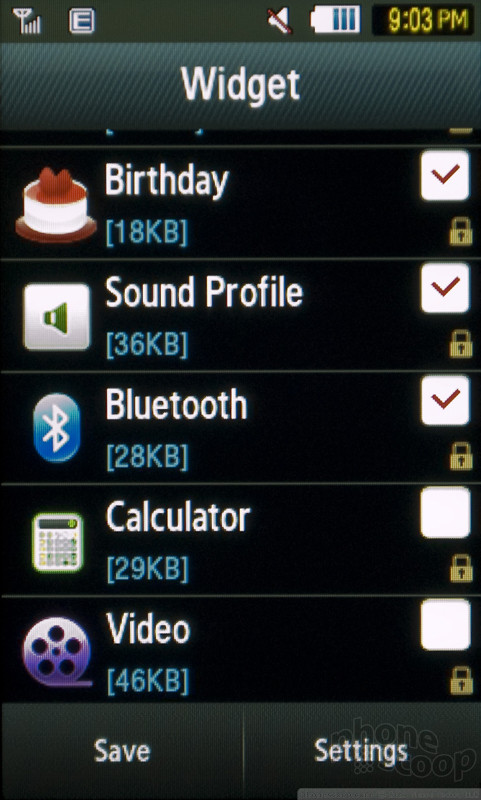
The TouchWIZ homescreen may be problematic, but it does offer plenty of options for customization. There are more than a couple dozen widgets, including multiple clocks and note pads. You can fill three homescreen panels to the brim with widgets, even overlapping them if you need the space. You can also change the wallpaper on these screens, or set up fancy gestures for the lock screen, instead of the standard "Hold to Unlock" button.
Beyond that, though, there are few custom options. You can't change the menu or the menu themes. You can tweak the font, but two of the three font options are juvenile in a Comics Sans sort of way. The phone then uses these fonts in the Web browser, which makes pages even more difficult to read.
Extras
Bluetooth
Bluetooth worked well on the Samsung Sunburst. I was easily able to pair the phone with a Bluetooth headset and a set of stereo Bluetooth speakers. The phone has object push capabilities to transfer photos over Bluetooth. This worked fine on my Windows 7 machine, but I couldn't connect using my Mac.
Clock
There's a nice, large clock on the Sunburst's lock screen. You can also add clock and calendar widgets to the TouchWIZ homescreen. Or, you can just rely on the clear digital clock at the top of the screen, which is present in every application.
GPS
The Sunburst uses AT&T Navigator for turn-by-turn directions. The navigator app could be much more touch friendly, but definitely got the job done. It tracked me on my trip in and out of the big city with no trouble, offering a new route or traffic advice along the way, as needed. It's an extra fee for the subscription, but that's fairly standard, so this is one exception I would make if you want good directions on your phone.
Other Extras
The Sunburst doesn't get some of the newer AT&T feature phone options, like the Online Locker or the online Address Book, but it does get the AppCenter to download apps. These are mostly simple games and tools, but it's nice to have the option to expand a bit.
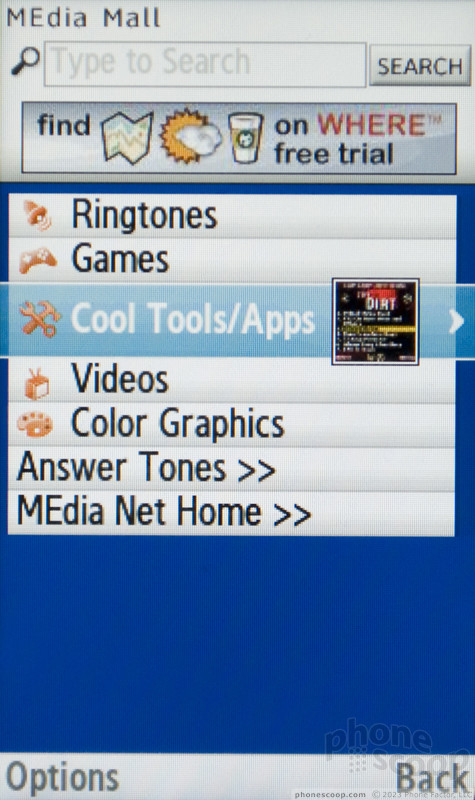
Video Tour
Wrap-Up
The Samsung Sunburst has a pretty face and great design for a simple tablet phone, but I'd have a hard time recommending it. The unresponsive touchscreen caused problems in almost every application and made the phone much less fun to use. I have almost nothing good to say about the TouchWIZ interface, except that it offers a large number of widgets. Still, placing the widgets onscreen and managing all those functions can be annoying since TouchWIZ seems so poorly designed for the small screen.
Even in basic tasks, the Sunburst comes up short. Call quality was just okay, and getting contacts onto the phone can be a nightmare without any sync options. Messaging features are as basic as they come; the Sunburst doesn't even get AT&T's most recent text messaging application, let alone a good, diverse IM client or a free email option.
The Web browser had fatal problems and couldn't load some key pages. Social Net provides a bare minimum for Facebook, MySpace and Twitter, but you'll definitely find this app, or something better, on other devices. I'd complain about the lack of 3G support, but the Web browser was so poor that you won't want to use it anyway, and that's the only place where faster networking would really make a difference.
The Samsung Solstice is only $10 more on AT&T at press time, and both phones are effectively free from other online distributors. The Sunburst has style, the Solstice has 3G, but neither phone is especially impressive. There aren't many tablet feature phones in this price range, but there are smartphones that are cheap or free, and right now the required smartphone data plan is cheaper on AT&T than the required feature phone messaging plan.
All things considered, it seems the Sunburst is trying to get by on its looks and a friendly smile.
Comments
Seems...
No video on the browser?
(Oh, and I appreciate you telling us which browser was loaded.)
(continues)


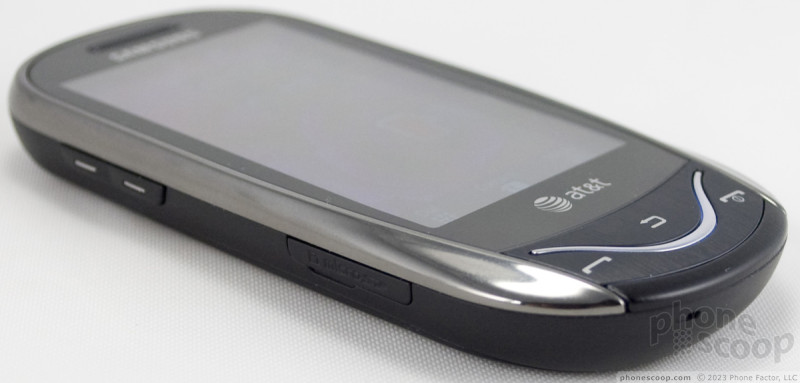





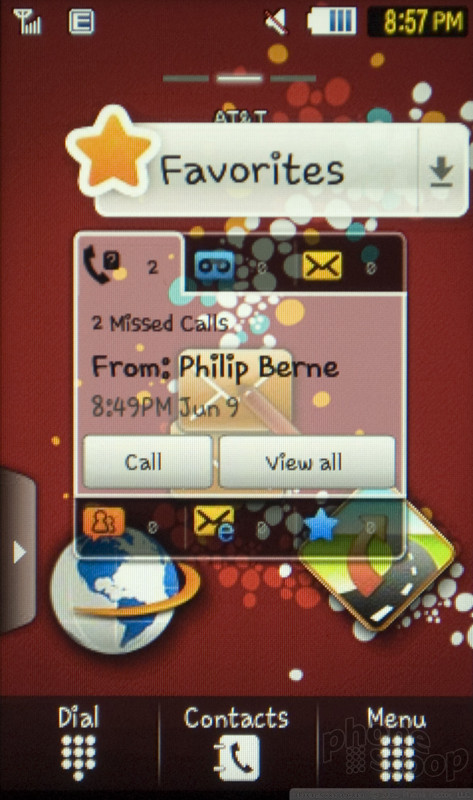






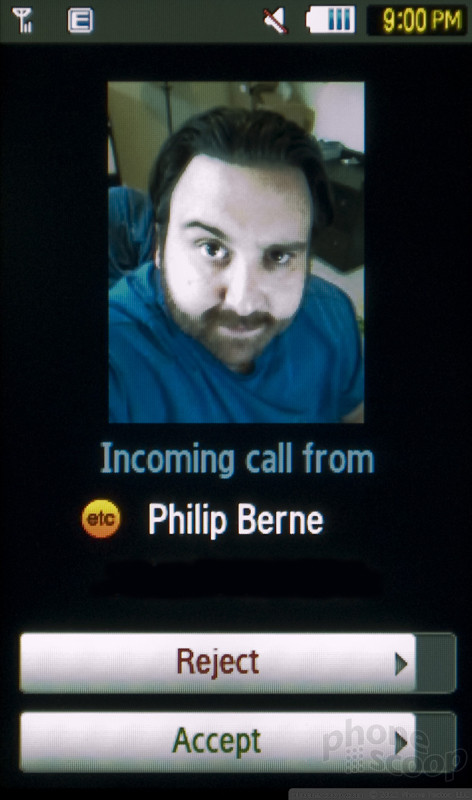





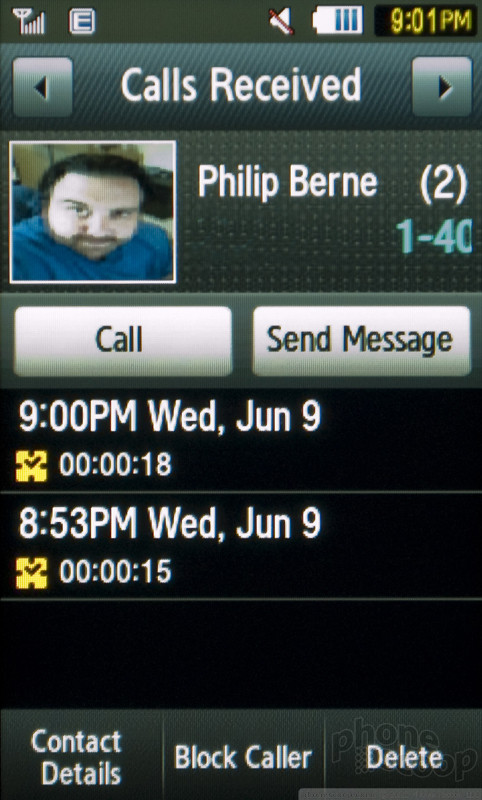




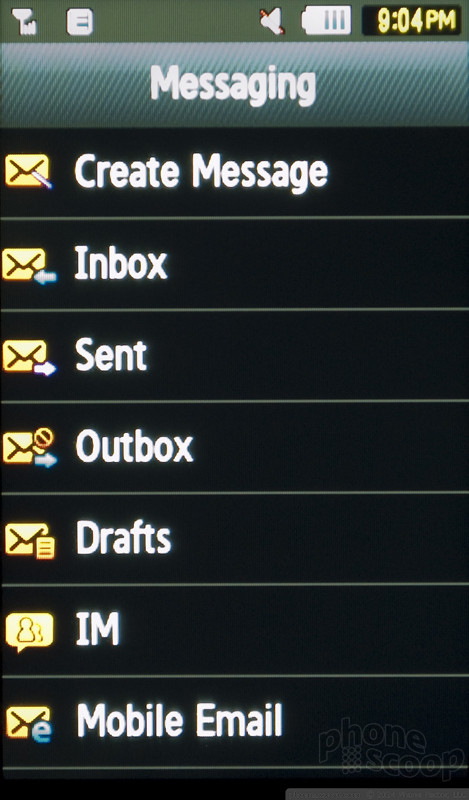






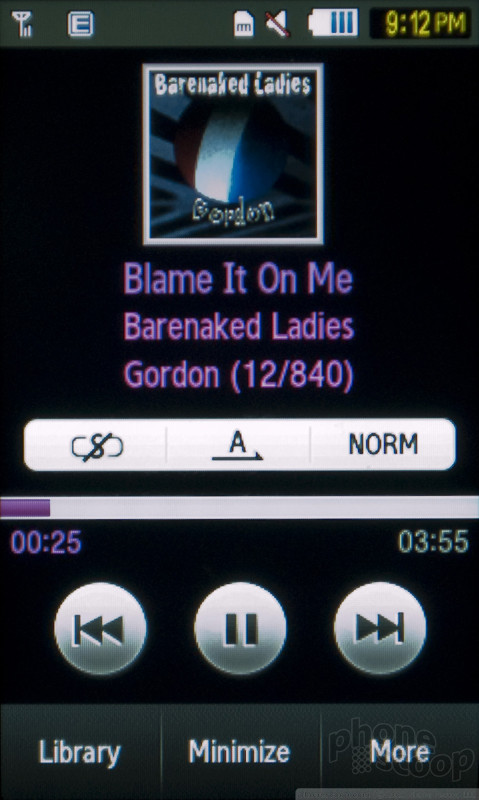







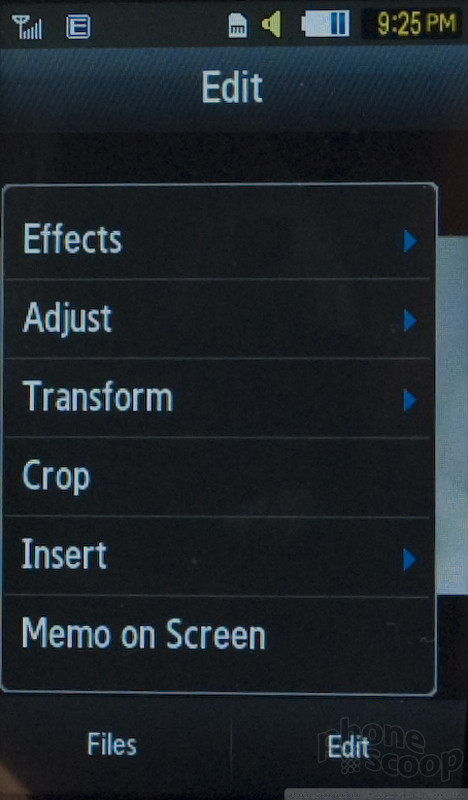










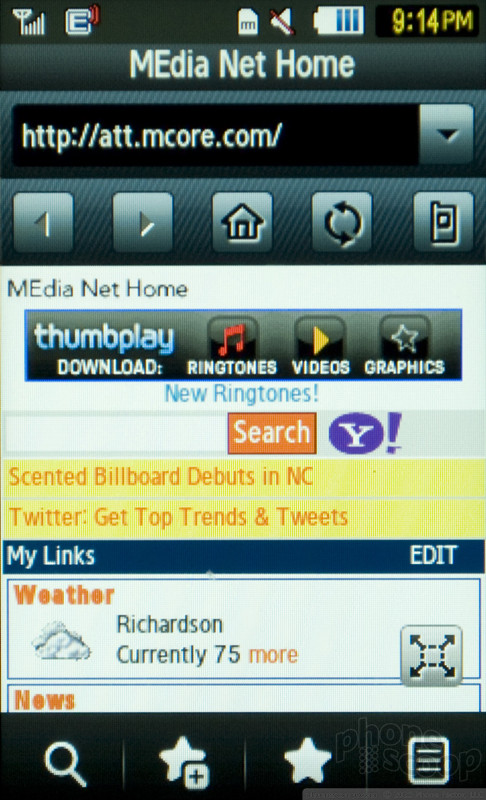







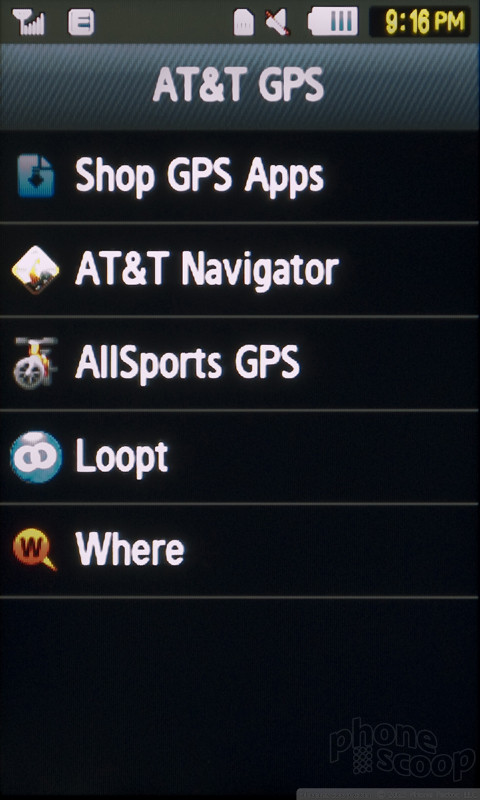



 iPhone 15 Series Goes All-In on USB-C and Dynamic Island
iPhone 15 Series Goes All-In on USB-C and Dynamic Island
 Samsung S24 Series Adds More AI, Updates the Hardware
Samsung S24 Series Adds More AI, Updates the Hardware
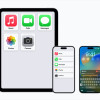 Apple Previews Major New Accessibility Features for iOS
Apple Previews Major New Accessibility Features for iOS
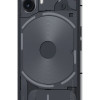 Nothing Phone (2) Sports Upgraded Specs, More Useful Glyphs
Nothing Phone (2) Sports Upgraded Specs, More Useful Glyphs
 Samsung's New Foldables Stick to the Formula
Samsung's New Foldables Stick to the Formula
 Samsung Sunburst A697
Samsung Sunburst A697




